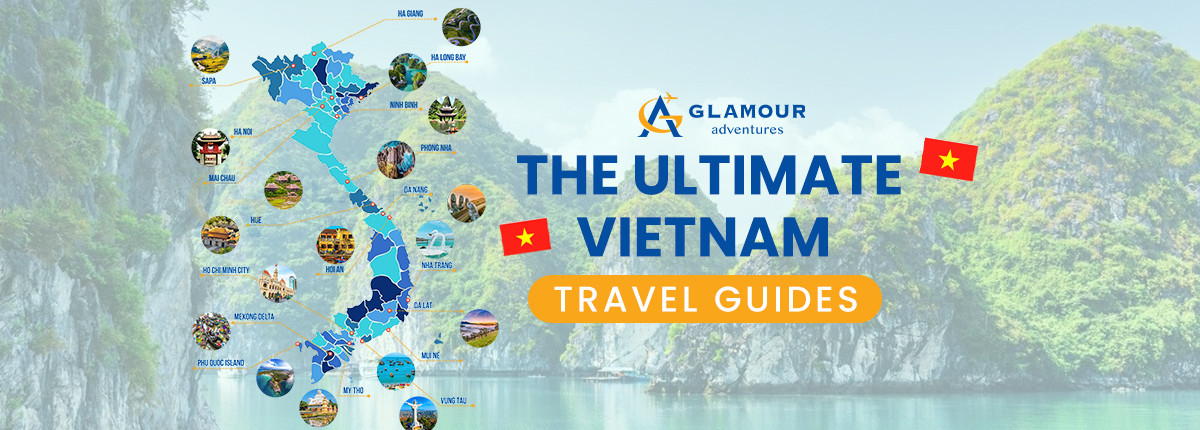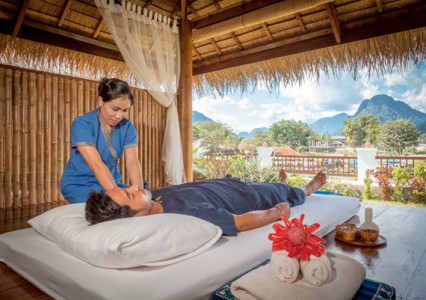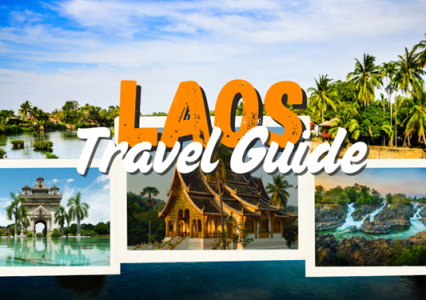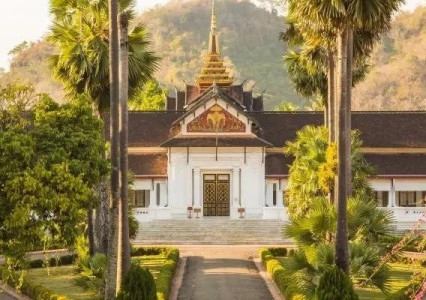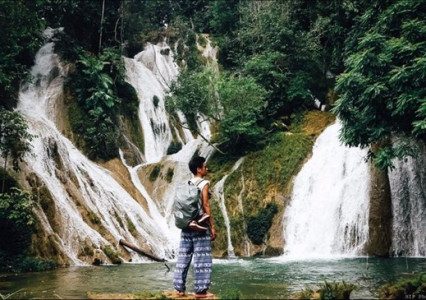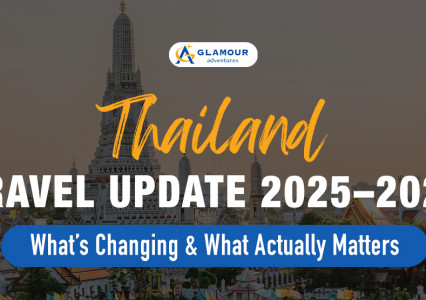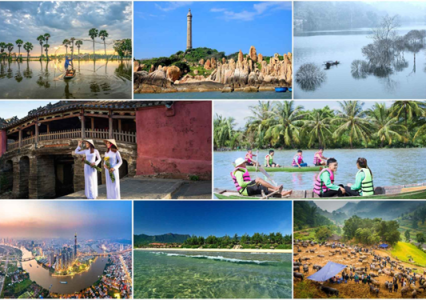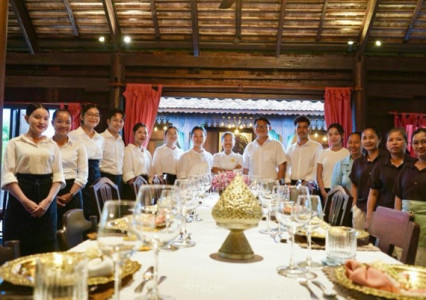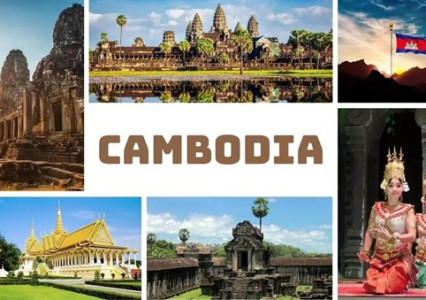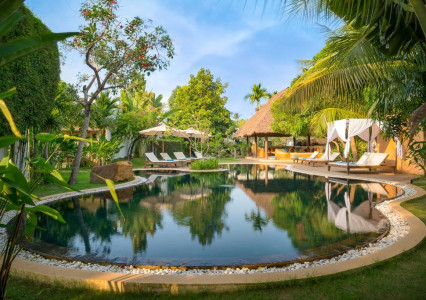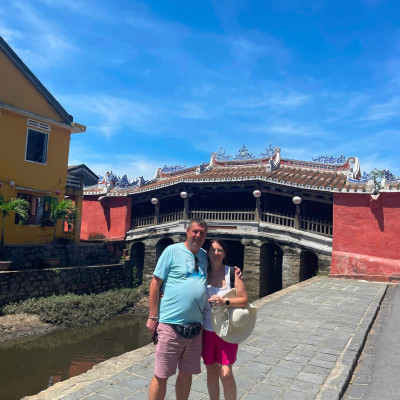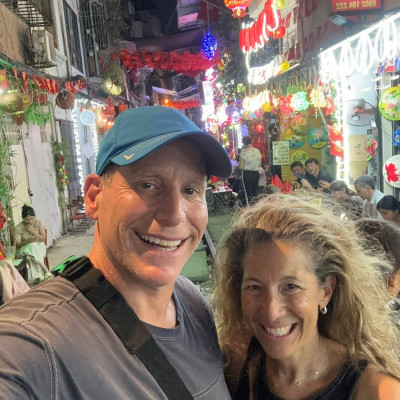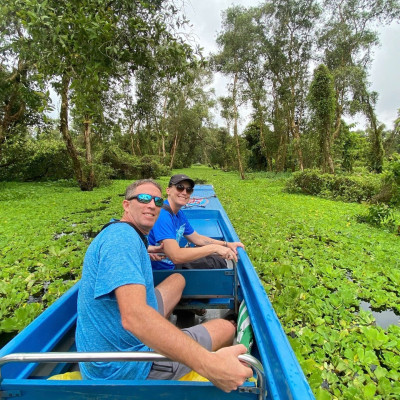THE ULTIMATE VIETNAM TRAVEL GUIDE - The Complete and Best Travel Guide for your Vietnam Holiday
1. Introduction to Vietnam
- Capital: Hanoi
- Area: 331,690 km²
- Population (2024): 101.112 million
- Timezone: UTC +7
Nestled in the heart of Southeast Asia, Vietnam is a captivating country known for its vibrant culture, diverse cuisine, and stunning natural landscapes. With over 3,000 kilometers of coastline, Vietnam is home to more than 125 pristine beaches and some of the world’s most beautiful bays. Its rich history and heritage are preserved in more than 3,000 national relics, including several UNESCO World Heritage Sites.
Vietnam's cultural identity has been shaped over 4,000 years, influenced by 54 unique ethnic groups. These groups contribute to a colorful cultural tapestry, expressed through time-honored customs, festivals, and traditional arts. Highlights of Vietnam’s intangible cultural heritage include the royal court music of Hue, the Gong culture of the Central Highlands, and the sacred worship of the Hung Kings.
The Vietnamese people are known for their warmth and hospitality, always ready to welcome travelers with open arms. Their resilience and dedication to preserving traditions make Vietnam not only a destination but a meaningful experience. Add to this a world-renowned cuisine that’s as diverse as it is delicious, and it’s no wonder Vietnam is consistently rated one of the safest and most affordable travel destinations in Asia. A journey to Vietnam is one that promises wonder, warmth, and unforgettable memories.
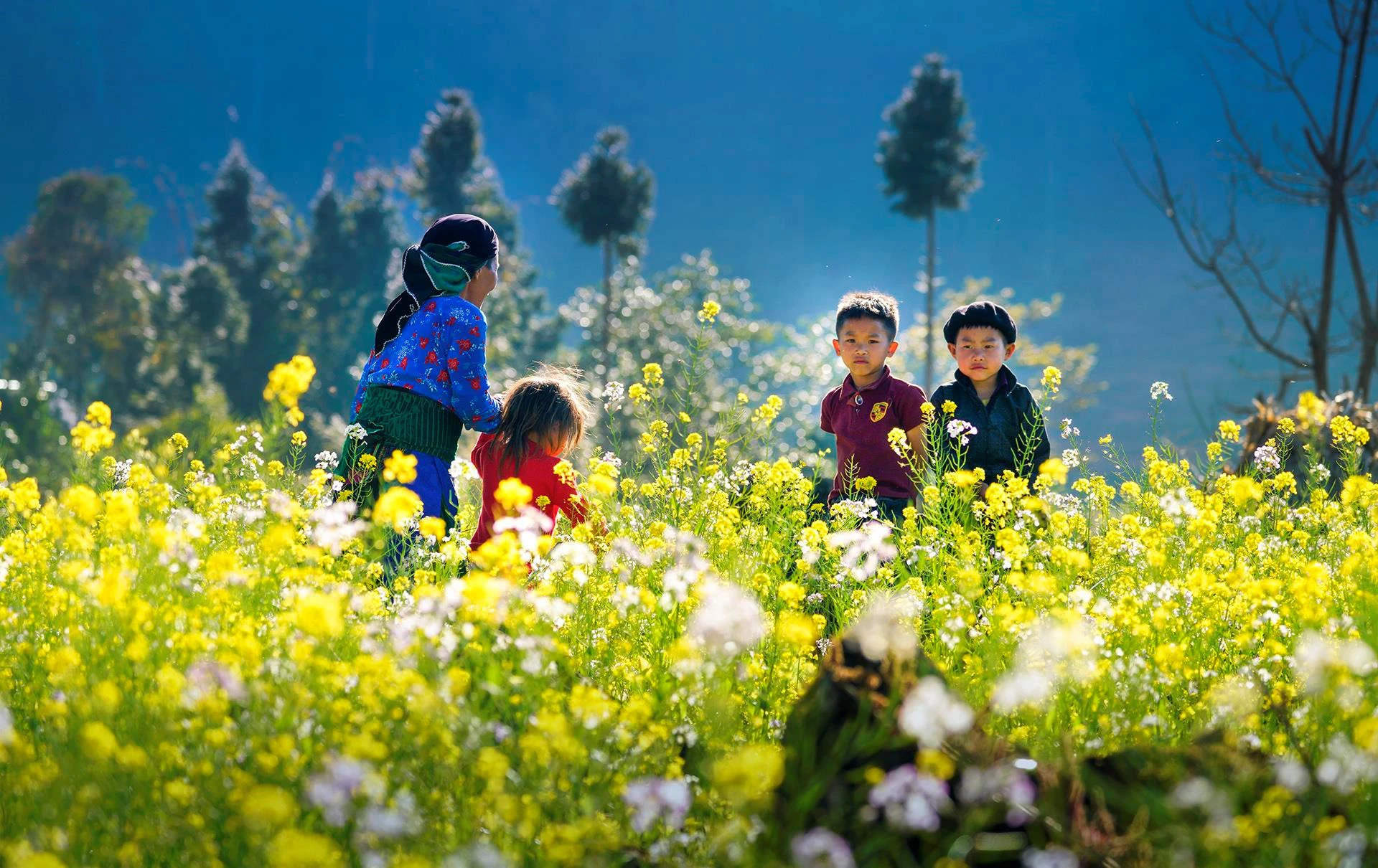
2. Geography of Vietnam
Located on the eastern edge of the Indochina Peninsula, Vietnam borders China to the north, Laos and Cambodia to the west, and faces the East Sea to the east. The country stretches over 1,650 kilometers from north to south, shaped like an elegant “S.” At its widest, Vietnam spans 500 kilometers, narrowing to just 50 kilometers at its slimmest point.
Terrain
Vietnam’s landscape is remarkably varied, with mountains, plateaus, plains, coastlines, and offshore continental shelves. About 75% of the country is mountainous or hilly, with elevations mostly under 1,000 meters. Only 1% of the land reaches above 2,000 meters. The remaining quarter consists of lowland plains, which are often divided by mountain ranges. Vietnam’s impressive coastline runs 3,260 kilometers from Mong Cai in the north to Ha Tien in the south.
Climate
Vietnam has a diverse climate influenced by latitude and elevation. The north experiences a humid subtropical climate with four distinct seasons—spring, summer, autumn, and winter. Meanwhile, the south enjoys a tropical climate with just two seasons: dry and rainy. Average temperatures range from 21°C to 27°C, gradually warming from north to south. The northern region can see significant drops in temperature during winter, including occasional snowfall in mountainous areas.
Vietnam receives between 1,400 and 3,000 hours of sunshine annually, with average yearly rainfall between 1,500 and 2,000 mm. Humidity levels typically stay around 80%, creating a lush environment that supports a diverse range of flora and fauna.
Ecosystems
Vietnam is blessed with one of the most biologically rich ecosystems in Asia. It is home to around 14,600 plant species and a wide array of wildlife, including 275 mammals, 800 bird species, 180 reptiles, 80 amphibians, 2,400 fish species, and approximately 5,000 types of insects—many of which are endangered and listed in the global Red Book.
Nature lovers can explore Vietnam’s many national parks and biosphere reserves, including Hoang Lien Son (Lao Cai), Cat Ba (Quang Ninh), Cuc Phuong (Ninh Binh), Phong Nha - Ke Bang (Quang Binh), and Can Gio (Ho Chi Minh City). These reserves offer remarkable opportunities for eco-tourism, wildlife photography, hiking, and scientific discovery.
3. Best Time to Travel to Vietnam
Vietnam’s geography stretches across three distinct climate zones—North, Central, and South—offering a wide range of weather patterns within just a few hundred kilometers. This climatic diversity means there’s always somewhere in Vietnam enjoying perfect travel conditions. Knowing when to go where can help you plan the most rewarding and comfortable experience.
Northern Vietnam: Ideal for Cool Adventures and Mountain Treks
Northern Vietnam—including Hanoi, Ha Long Bay, Ninh Binh, Sapa, and Ha Giang—features four seasons and a sharp contrast between the mountainous highlands and the lowland plains.
- Mountains (Sapa, Ha Giang):
The best time to visit is September to November and March to May, when skies are clear and temperatures are mild—perfect for trekking. From October to March, it’s dry but can get quite cold, especially in December and January. The rainy season begins around April and peaks between June and August. - Lowlands (Hanoi, Ninh Binh, Ha Long Bay):
Winters (November–April) are cool and relatively dry, with temperatures averaging between 17–22°C. Summers (May–October) are hot, humid, and wet, with July and September bringing the heaviest rainfall, particularly along the coast.
Best time:
September–November for cooler weather and vibrant landscapes, or March–April for spring blooms and mild conditions.
Central Vietnam: Sun-Kissed Coasts and Cultural Gems
Central Vietnam encompasses cities like Hue, Da Nang, Hoi An, Quy Nhon, and Nha Trang, along with the Central Highlands town of Da Lat. This region experiences more extreme weather fluctuations and is particularly sensitive to typhoons.
- Coastal cities (Hue, Da Nang, Hoi An):
Hot and dry weather dominates from January to August, with peak heat around June and July. The rainy season arrives in September, with October and November often experiencing heavy rain and tropical storms. - Southern coastal towns (Quy Nhon, Nha Trang):
These areas enjoy longer dry spells, staying sunny and pleasant well into September. - Da Lat (Central Highlands):
Due to its elevation, Da Lat maintains cooler temperatures year-round. Expect rain from May to October and crisp, chilly weather from November to February.
Best time:
February to August for beach lovers and cultural explorers, and December to March for a cool getaway in Da Lat.
Southern Vietnam: Warm Weather All Year Round
Southern Vietnam—covering Ho Chi Minh City, the Mekong Delta, and island destinations like Phu Quoc and Con Dao—has a classic tropical climate with just two seasons: dry and wet.
- Dry season (November–April):
Expect clear skies, low humidity, and average temperatures around 28–35°C. The hottest months are March and April, just before the rains arrive. - Rainy season (May–October):
Rain typically comes as short, intense afternoon showers, offering relief from the heat without disrupting travel plans too much. - Islands (Phu Quoc, Con Dao):
These islands remain travel-friendly even during the rainy season, with frequent sunshine and predictable weather patterns.
Best time:
December to April for perfect beach weather and outdoor adventures.
Summary: When and Where to Go
| Region | Best Months | Highlights |
|---|---|---|
| Northern Vietnam | Sep–Nov & Mar–May | Trekking, cultural sightseeing, cool weather |
| Central Vietnam | Feb–Aug | Beach vacations, ancient towns, sunshine |
| Southern Vietnam | Dec–Apr | Tropical escapes, island getaways |
4. Best Places for Nature Discovery in Vietnam
Vietnam is a paradise for nature lovers, offering a diverse array of breathtaking landscapes—from misty mountains and verdant valleys to majestic caves and cascading waterfalls. Whether you're an adventurer, a photographer, or a casual explorer, these destinations promise unforgettable encounters with the country's natural beauty.
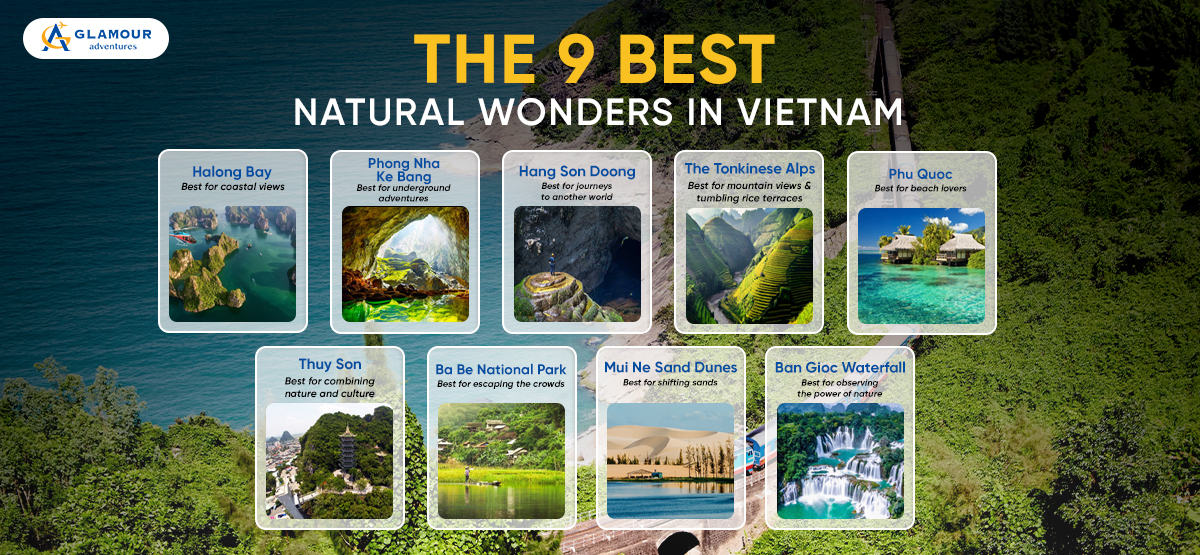
1. Hanoi
Hanoi is chock full of history and culture, particularly in the Old Quarter, which is the tourism hub of the city with its bustling market streets, pulsating nightlife and some of the best local cuisine in the country. If you plan to visit, here are the other destinations that you shouldn’t miss:
- Imperial Citadel of Thang Long
- Water Puppet Theatre
- Ho Chi Minh Mausoleum
- Hoan Kiem Lake and Ngoc Son
- Dong Xuan Market
- Ba Vi National Park
- Hanoi Opera House
- Temple of Literature
2. Sapa
This picturesque town has both culture and breathtaking natural beauty rolled into one enticing package. It is home to a number of ethnic groups and has grown significantly over the past years. What was once a quiet mountain town is now a tourist hot spot. Try to find a homestay in one of the villages or if the weather permits, climb Fansipan which is the highest mountain in Indochina. Check out this list of fun things to do in Sapa to spice up your itinerary…
- Trek and visit the captivating tribal villages
- Take a leisurely stroll near Sapa Lake
- Marvel at the majestic and romantic Love Waterfall
- Take a cable car up to lofty Fansipan
- Gaze in awe at the green rice terraces of Muong Hoa Valley
- Bask in the splendor of Thac Bac Waterfall (or the Silver Falls)
- Enjoy a traditional textile experience at Cat Cat or Ta Phin Village
- Experience the hustle and bustle of the Sapa market
- Snap photos amid the colorful sights of Ham Rong Flower Garden
- Discover history and culture at Sapa Museum
- Go off the beaten track and trek through authentic villages along Muong Hoa Valley
- Stay overnight in one of the homestays in remote villages of Ban Ho or Thanh Phu
- Go ecofriendly by staying overnight in one of the ecolodges near Sapa: Topas Ecolodge, Utopia Lodge
- Visit one of the colorful ethnic markets near Sapa: Coc Ly market on Tuesday, Can Cau Market on Saturday, Muong Khuong, Bac Ha markets on Sundays
3. Halong Bay
No trip to the northern region of Vietnam is complete without a visit to Halong Bay. Declared as a UNESCO World Heritage Site in 1994, Halong Bay’s towering limestone islands are a sight of ethereal beauty. It’s therefore not surprising that it is northern Vietnam’s premier tourism hub.
The entire Halong Bay or sometimes referred to as the Gulf of Tonkin, covers an area of approximately around 1,500 square kilometers. Experts claim that it took roughly 500 million years to form Halong Bay to the 1,969 islands and islets made from karst limestone. Humans have inhabited the area since time immemorial but inflicted no damage to the natural wonder. The magnificent landscape has definitely added unique cultural values to this unique spot.
Things to do in Halong Bay
- Sign up for a day boat cruise or better, spend a night on a traditional wooden boat
- Kayak around the karst formations, explore fishing villages and hidden lagoons
- Get up early to participate in a Taichi Class on the sundeck and see the Sun rising
- Go spelunking at Hang Sung Sot Cave
- Go squid fishing at night
- Have a bird’s eye view of the landscape on board a seaplane
- Take an excursion to Cat Ba Island and explore one of the caves (Hospital Cave, Trung Trang Cave)
- Bicycling to Viet Hai Village
- Enjoy the serene surroundings at Lan Ha Bay
- Check out Virgin Cave in Bon Hon Island
- Travel to Monkey Island and stay at the secluded Monkey Island Resort
4. Hoi An
Located in the central coast of Vietnam, Hoi An is popular for its well-preserved Ancient Town that is traversed by canals. The city is a melting pot of history as clearly reflected by its architecture, a blend of different eras and styles – from French colonial buildings to Vietnamese tube houses, wooden Chinese temples, and the Japanese Covered Bridge with its iconic pagoda.
Things to do in Hoi An
- Explore the UNESCO Heritage Sites including Hoi An Old Town
- Snap amazing photos at the iconic Japanese Covered Bridge
- Enjoy a gastronomic treat at the popular restaurants
- Soak up the sun at An Bang Beach
- Get your bicycle and explore the village paths and countryside
- Sharpen your bargaining skills at the Hoi An Central Market
- Take a tour at the Museum of Trade Ceramics
- Enjoy a day of scuba diving and snorkeling at Lao Cham Island
- Have some special tea at Reaching Out Tea House
- Attend a Cooking Class at Sabirama Cooking School
- Go for a stroll to the Lantern Market
- Sit down and learn to make silk lanterns at a local house
- Sip a cup of coffee or cool drink at Faifo Cafe with panoramic view from the rooftop
- Further afield: visit My Son Sanctuary for a half day; spend a full day on Ba Na Hills to explore the viral Golden Bridge and the Amusement complex on the Ba Na Hills with round trip transfers by cable car; trek the Bach Ma National Park
5. Nha Trang
Located in Vietnam’s south-central coast, Nha Trang is a traveler’s paradise. This resort city offers you miles of of white sandy beaches against a backdrop of verdant mountains, lots of beautiful islands, plenty of historical sites and long hours of sheer relaxation. In addition, there is a menagerie of other captivating activities that will leave you asking for more!
In case you are wondering what to do in Nha Trang, then take a look at the list below.
- Engage in adrenaline pumping water sports, scuba diving and snorkeling
- Embark on sailing trips to neighboring islands
- Take a trip to paradisaical Doc Let or Bai Dai beaches
- Go on excursions to Ponagar Cham temples and the 19th century Long Son Pagoda
- Check out Vinpearl cable car, the world’s longest oversea cable car
- Visit Vinpearl Amusement Park and spend a full day to experience unparalleled fun for kids
- Visit Yang Bay Eco Park, a charming nature park just a stone’s throw away from the town centre
- Kick back and relax Vietnamese style at the Thap Ba Hot Springs and Mud Baths
- Explore the National Oceanographic Museum of Vietnam
- If you love photography, make sure to drop by the Do Dien Khanh Gallery
- Explore the countryside by bicycle or by boat
- Rafting the Cai River
6. Dalat
A lot of people call it ‘Le Petit Paris’ and this hill town even has a mini-replica of the Eiffel Tower in its centre! It is also a preferred location among domestic honeymooners, hence it’s also called ‘The City of Flowers’ and ‘The City of Lovers’
Dalat is renowned for its wide variety of flowers, fruits, and vegetables from its farmlands. It’s equally known for its pristine nature sites, beautiful landscape, and minority villages. There’s certainly something for everyone, but here some of the things that you should try if you visit this remarkable place…
- Explore the summer palace of Emperor Bao Dai, the last emperor of Vietnam
- Visit Da Lat Railway, one of Vietnam’s oldest railway stations and known for its art deco architectural style
- Marvel at the unconventional and fairytale-like architecture of the Hằng Nga Guesthouse, also known as the ‘Crazy House’
- Go on a cable car ride to Truc Lam Pagoda, a complex featuring traditional Asian architecture
- Mingle with over 100 monks and nuns at the Truc Lam Pagoda (a Buddhist Zen monastery)
- Take in the stunning vistas atop Lang Biang Mountain
- Allot a few hours and make a trip to Pongour Waterfalls
- Stroll through elaborate floral displays at the Dalat Flower Gardens
- Go on a drive outside the city and visit Lang Biang Mountain and the Elephant Waterfalls
- Head to a village of K’Ho ethnic minority to learn about local life, Vietnamese coffee and enjoy a cup of freshly brewed coffee by the farm owner/local host
- Discover how weasels and coffee come together at the Trai Ham Da Lat Weasel Coffee
- Find cute gifts and haggle for inspired goods at the lowest prices at the Dalat Night Market
- Trek on the quite path through the pine forest, coffee and persimmon plantations up to Pinhatt Mountain in order to enjoy the fabulous, picturesque view of Tuyen Lam Lake.
- Hit the road on two wheels and head off to Lak Lake
7. Ho Chi Minh City
Commonly called Saigon, Ho Chi Minh City is known for its French colonial landmarks, including the 19th-century Central Post Office and the Notre-Dame Cathedral, which is entirely constructed of materials imported from France. From the cheapest guesthouses to world class hotels, the tastiest of street stalls to the classiest restaurants, the scrum of the markets to the finest boutiques, Ho Chi Minh City is a high-octane conurbation of commerce and culture.
Without further ado, here are the top things to do in Ho Chi Minh City:
- Crawl through the Cu Chi Tunnels
- Savor the flavor of a bowl of Pho
- Visit the Giac Lam Pagoda, the oldest temple temple in the city
- Enjoy a romantic dinner on Bonsai River Cruise
- Explore the War Remnants Museum
- Tour the Reunification Palace
- Visit the Central Office which was designed by Gustave Eiffel, of Eiffel Tower fame
- Grab a cup of coffee in Tao Dan Park
- Have a drink and enjoy the nightlife in Pham Ngu Lao or Bui Vien Street
- Tour the History Museum with artifacts dating 4,000 years
- Say a prayer at the Notre Dame Cathedral
- Marvel at the splendor of the Cao Dai Temple
- Scale the Bitexco Financial Tower
- Snap some amazing photos at the Phuoc An Hoi Quan Pagoda
- Visit the Jade Emperor Pagoda, one of the fanciest temples in the city
- Tour the Ho Chi Minh City Museum
- Explore the Fine Arts Museum
- Admire the caramel-colored Cha Tam Church
- Shop till you drop and dine at the Ben Thanh Market
- Shop like a local at the Binh Tay Market
- Head to an organic farm in the outskirt of Ho Chi Minh City to learn about herbs, pick up ingredients for the cooking lesson.
8. Mekong Delta
The Mekong Delta in is the ‘rice bowl’ of Vietnam. It is a water world with its vast maze of rivers, canals, swamps, and floating markets. You’ll also find ornate Khmer pagodas, Buddhist temples, and communities surrounded by rice paddies. Boats are the primary means of transportation, and tours of the region typically start in Ho Chi Minh City or in Can Tho, a bustling city in the heart of the delta.
- Embark on a Sampan Cruise in My Tho. Regardless where the cruise starts, the boat will take you to Dragon (Con Tan Long), Tortoise (Con Quy) and Unicorn (Con Thoi Son) islands
- Visit the Vinh Trang Pagoda and the Bat Pagoda
- Tour the Cai Be Fruit Orchard, the largest of its kind in the delta
- Visit floating markets and experience the daily life on the Mekong River
- Pick up a bicycle to ride along peaceful village paths in deeper Mekong Delta
- Sample a bowl of noodle soup at Cai Rang floating market
- Come to the Tra Su Cajuput Forest to see what the wetlands look like
- See the process of traditional silk making in Tan Chau Silk Village
- Go bird watching at Tram Chim National Park
- Scale the Sam Mountain and enjoy a grand view at the peak featuring Cambodia on one side and Vietnam on the other
- Be more daring at Dong Tam snake farm, dubbed “The Kingdom of Snakes”
- Visit Hon Phu Tu – Father and Son Island off the coast of the Cave Pagoda strait

Vietnam is a food lover’s paradise. The country’s cuisine is incredibly diverse, fresh, and full of bold, distinctive flavors. Each region offers its own unique dishes and variations. Here’s a guide to what to eat in Vietnam, organized by category and region.
5. National Dishes You Can’t Miss
Vietnam may boast a diverse landscape, but its cuisine is united by a signature balance of aromatics, sourness, sweetness, and that unmistakable fish sauce umami. Like many other Asian culinary traditions, Vietnamese food is all about harmony — the interplay between sweet and salty, fresh and fermented. One of the most striking things about Vietnamese cuisine is its simplicity. Many of the country’s most beloved dishes can be made just as well on a humble street corner as in an upscale restaurant. It's this straightforward approach, combined with fresh ingredients and subtle regional twists, that makes Vietnamese food so appealing — and keeps travelers coming back for more.
In the north, the cuisine is more restrained in flavor and heavily influenced by Chinese cooking, with an emphasis on noodle soups, stir-fries, and dumplings. As you move south, the flavors become bolder and more complex, reflecting the culinary styles of neighboring Cambodia and Thailand. Southern Vietnam's tropical climate also allows for an abundance of fresh produce — from fragrant herbs and rice paddies to coconut palms and jackfruit trees. The dishes here tend to be sweeter, with savory recipes often enhanced by palm sugar and a hint of sweetness even in pho broth.
No discussion of Vietnamese food is complete without acknowledging the imprint of French colonialism. The French left a lasting legacy not only on the country’s architecture and language but also on its culinary scene. The clearest example is the bánh mì — a Vietnamese take on the classic French baguette. But this isn’t just a sandwich; it’s a creative fusion of East and West, filled with everything from sardines and fish cakes to grilled pork, pâté, pickled vegetables, cilantro, and chili. Vietnam took the baguette and gave it a new identity — and that’s what the cuisine is all about: adaptation, balance, and bold flavor.
6. Holidays & Special Events
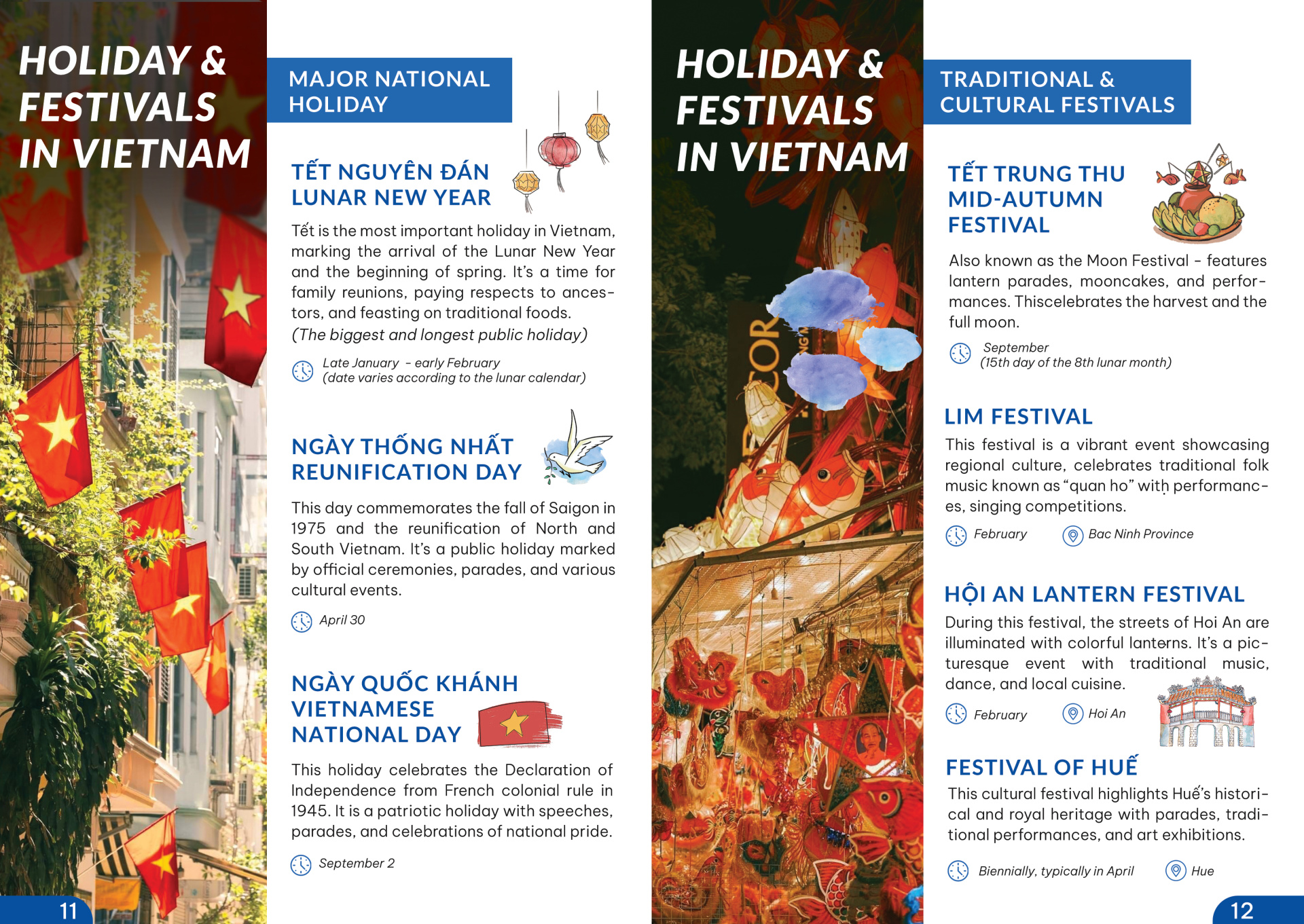
Tết Nguyên Đán – Vietnamese Lunar New Year
Tết, short for Tết Nguyên Đán, is the most important and widely celebrated holiday in Vietnam. Often referred to as the Vietnamese Lunar New Year, this festival marks the arrival of spring and usually falls between late January and mid-February. The name translates to “Feast of the First Morning of the First Day,” and it’s a time for family reunions, festive traditions, and fresh starts.
During Tết, cities empty out as people return to their hometowns. Urban areas may feel like ghost towns, while countryside villages come alive with gatherings and celebration. The holiday officially lasts three days, but in many places, the festive atmosphere continues for over a week.
Each day of Tết has its own focus:
- Day one is reserved for family.
- Day two is for visiting friends.
- Day three is dedicated to teachers and paying respects at temples.
The atmosphere is lively and often noisy—fireworks light up the skies, and people create a ruckus with gongs, bells, and firecrackers to ward off bad spirits. While it’s an exciting time to experience Vietnamese culture, it can be a challenging period for travel. Transportation fills up fast, businesses close for several days, and accommodation prices surge.
Travel Tip: If you plan to visit Vietnam during Tết, book everything in advance—flights, trains, buses, and hotels. Expect higher prices for tours and transportation due to the holiday rush.
Upcoming Tết Dates:
- 2026: Tuesday, February 17
- 2027: Saturday, February 6
- 2028: Wednesday, January 26
Hue Festival
Held every two years in the imperial city of Hue, this week-long cultural extravaganza celebrates the rich traditions of the Nguyen Dynasty. First launched in 2000, the Hue Festival takes place in April, May, or June, and features a colorful blend of performances, rituals, and artistic showcases.
Festival highlights include:
- Traditional music and dance performances
- The Ao Dai fashion show
- Kite flying, boat racing, and human chess
- Street parades, art exhibitions, and movie screenings
You’ll also get the rare chance to witness reenactments of historic royal ceremonies, like the Xa Tac Offering Ritual, Nam Giao Offering Ritual, and the Royal Refined Music of Hue—a UNESCO-recognized cultural treasure.
Hue’s ancient citadel and scenic surroundings serve as the perfect backdrop, making this a must-see event for anyone interested in Vietnamese history and culture.
Mid-Autumn Festival
Known locally as Tết Trung Thu, the Mid-Autumn Festival is a vibrant celebration of harvest, family, and childhood. It’s held on the 14th and 15th days of the 8th lunar month, usually in September or early October.
Also called the Full Moon Festival or Children’s Festival, it’s famous for its lantern processions, lion dances, and sweet treats. Families set up offerings under the glow of the full moon, with traditional foods like sticky rice, fresh fruit, and of course, mooncakes.
One of the best places to experience the magic of the Mid-Autumn Festival is the ancient town of Hoi An. The entire city transforms into a wonderland of light, with glowing lanterns lining the Japanese Covered Bridge and the banks of the Thu Bon River. Children take part in drawing and writing contests, while visitors enjoy the festive buzz of food stalls, folk games, and performances.
7. Top Things to Do in Vietnam
From the misty mountains of the north to the tropical rivers of the south, Vietnam offers a wide range of unforgettable experiences. Whether you're an adventure seeker, a culture lover, or a nature enthusiast, this country promises a journey full of discovery.
Conquer Majestic Mountains
Vietnam’s mountainous landscapes are a dream come true for hikers and nature lovers. Most of the country’s highest peaks are found in the northwest, where the terrain is both rugged and awe-inspiring. Leading the way is Fansipan, known as the "Roof of Indochina," standing tall at 3,143 meters. Trekkers often head here for a once-in-a-lifetime climb.
Beyond Fansipan, there are plenty of other rewarding trails. Popular trekking routes include Lao Than, Ta Xua, Bach Moc Luong Tu, Lung Cung, and Pusilung. These trails pass through remote hill tribe villages, offering not just spectacular views but also a chance to engage with Vietnam’s rich ethnic culture.
Explore Enchanting Caves
Vietnam is home to some of the most extraordinary cave systems in the world. Provinces like Quang Binh, Ninh Binh, and Quang Ninh boast a variety of caves that attract adventure seekers and nature enthusiasts alike.
In Phong Nha-Ke Bang National Park, explorers can discover world-famous caves such as Son Doong (the largest cave on Earth), En Cave, Paradise Cave, and Tu Lan Cave System. Each offers a glimpse into Vietnam's spectacular underground world.
In Ninh Binh, the caves of Trang An and Tam Coc are explored by boat, winding through emerald waters and beneath dramatic karst formations. Over in Ha Long Bay, stunning caves like Sung Sot and Luon blend natural beauty with serene bay views, making them must-visits on any trip.
Discover the Charm of the Countryside
For a more peaceful and culturally immersive experience, head to Vietnam’s countryside. Here, age-old traditions are still alive, surrounded by lush fields and timeless villages. From 2022 to 2024, UN Tourism recognized three Vietnamese villages among the Best Tourism Villages in the World:
- Thai Hai Village (Thai Nguyen)
- Tan Hoa Village (Quang Binh)
- Tra Que Village (Hoi An)
Each village offers something unique. Cycle through Tan Hoa’s stunning karst landscapes and traditional stilt houses, dive into Thai Hai’s preserved Tay ethnic culture, or get your hands dirty in Tra Que’s fragrant herb gardens and time-honored farming practices.
In the Mekong Delta, you’ll find a world built on water — with floating markets, fruit orchards, bee farms, and riverfront villages. Life here moves to the rhythm of the river, offering visitors a fascinating look into one of Vietnam’s most distinctive regions.
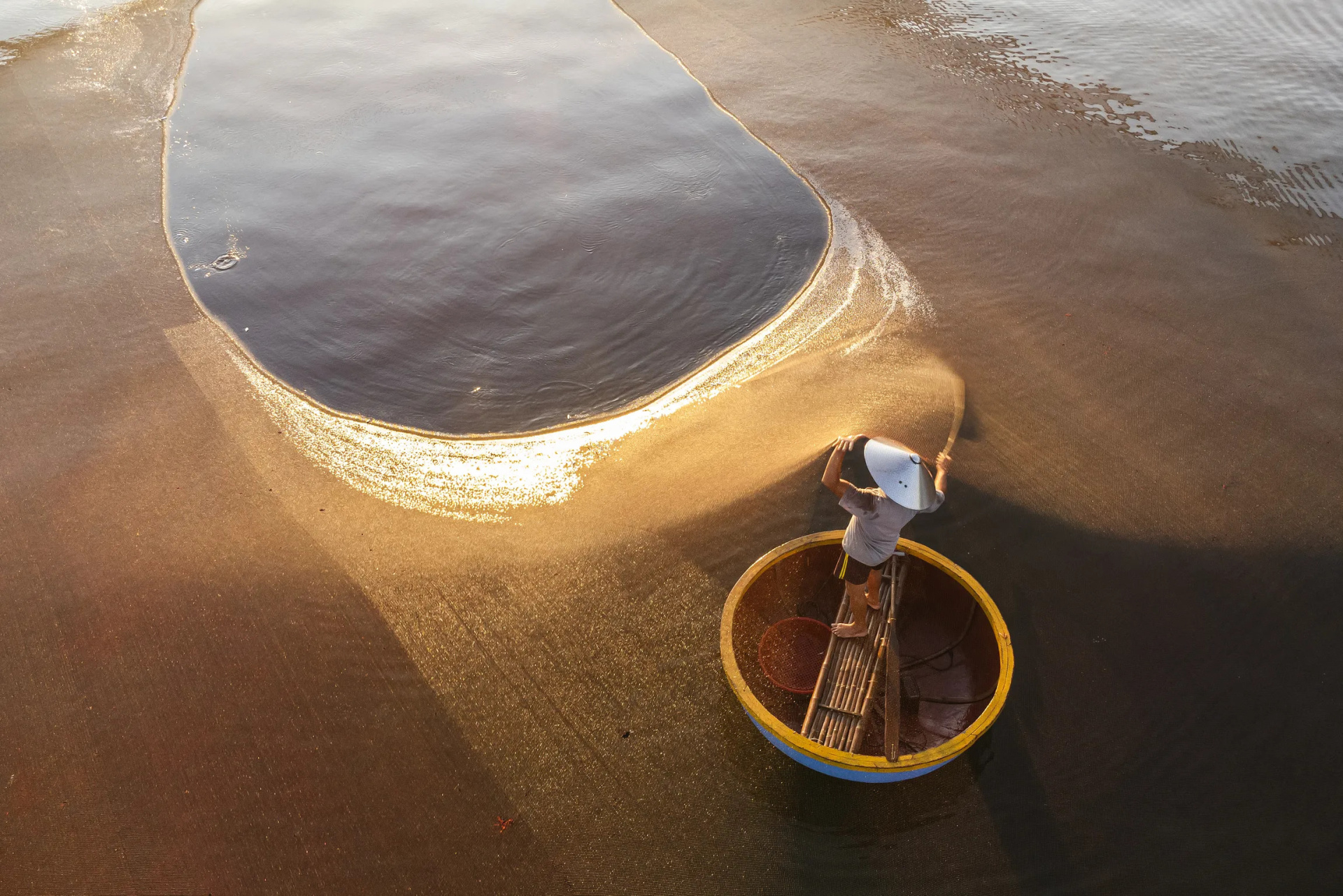
Other Articles
YOU MAY ALSO LIKE
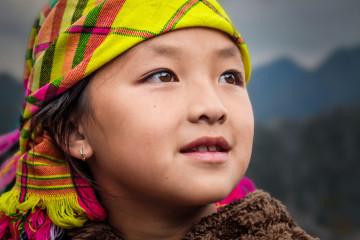
23 DAYS - Private Vietnam 23 Days 22 Nights - Major of VietNam Trip
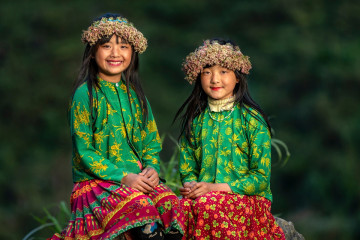
19 DAYS - Private Vietnam 19 Days 18 Nights - Explore Vietnam
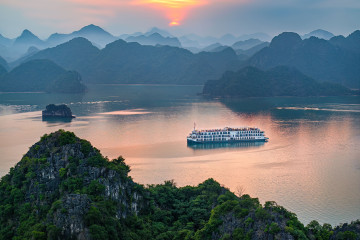
38 DAYS - Private Vietnam- Laos- Cambodia- Thailand 38 Days 37 Nights - Indochina Odyssey
Speak to Your Local Travel Expert





